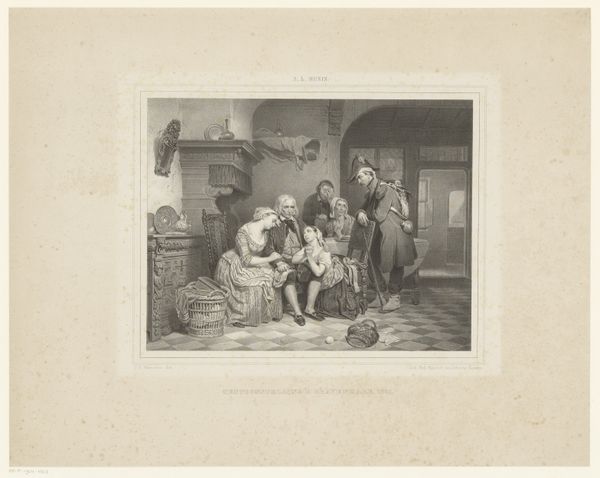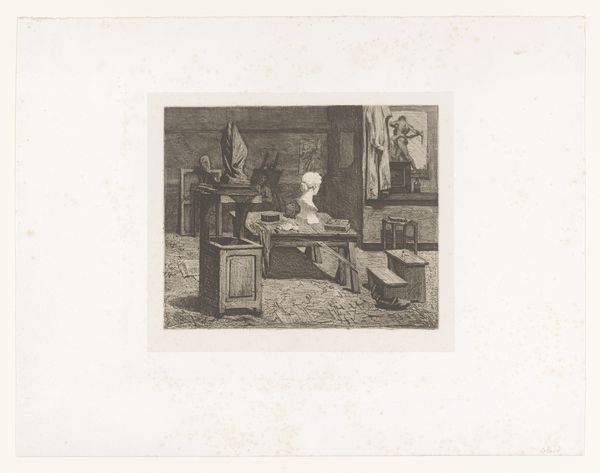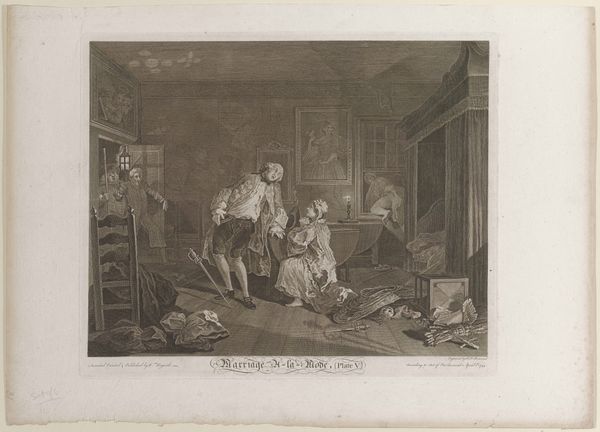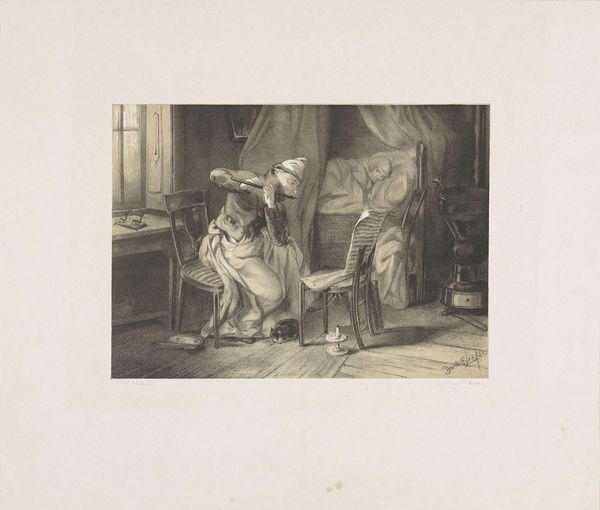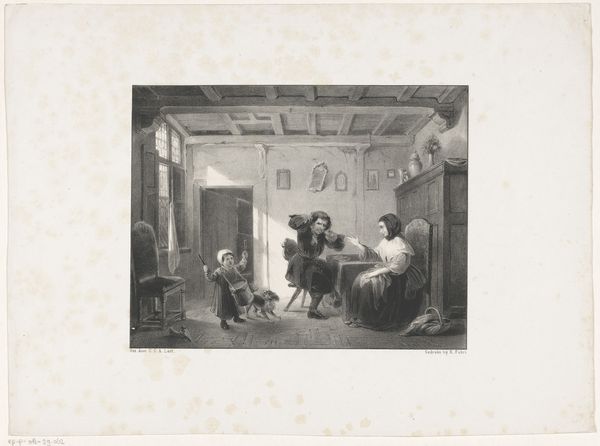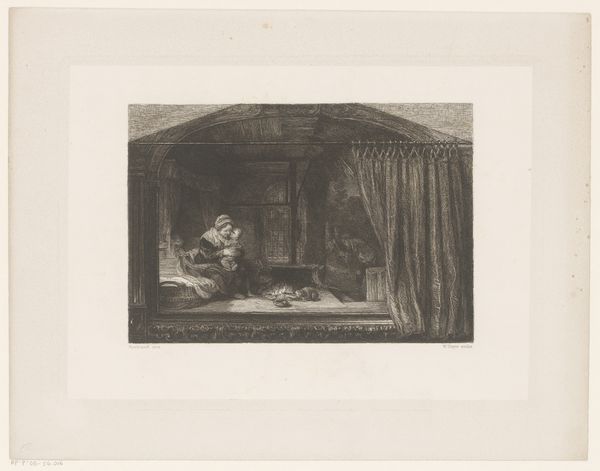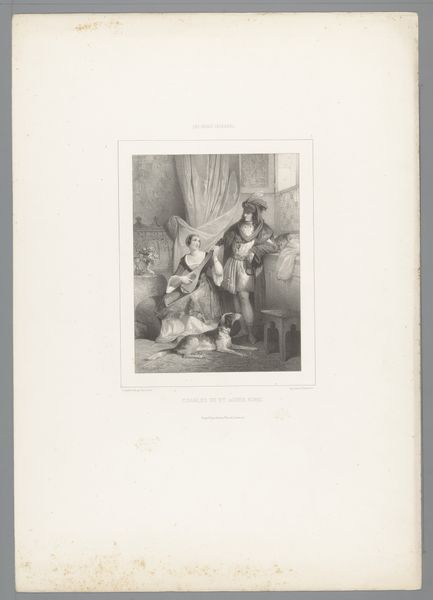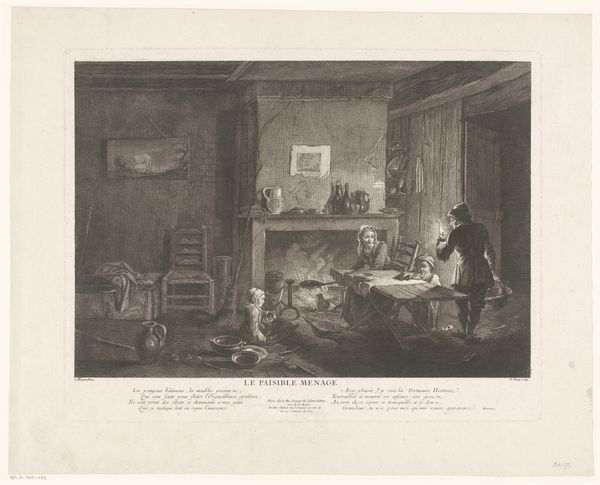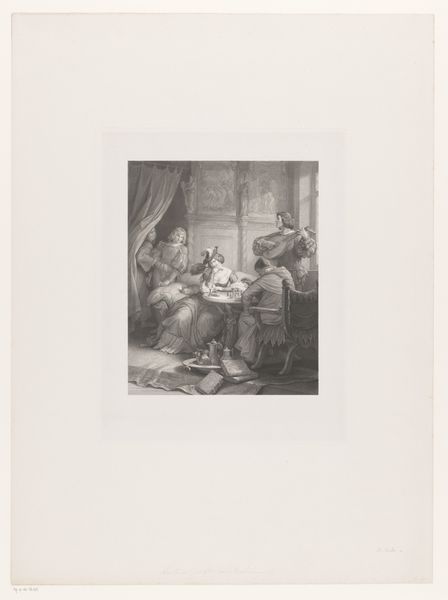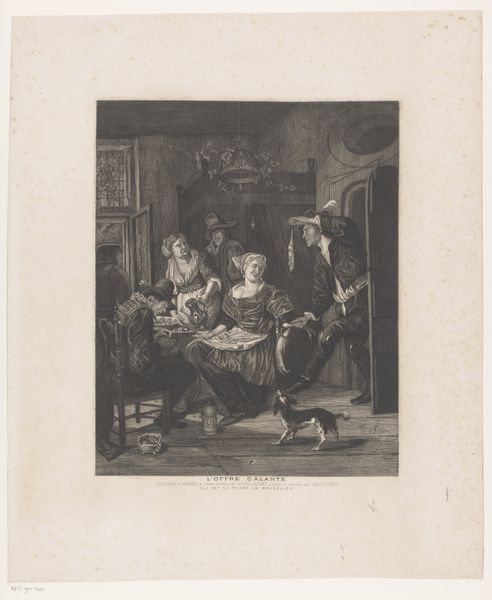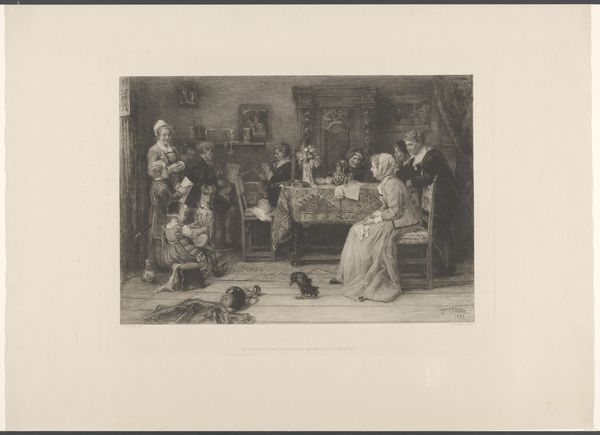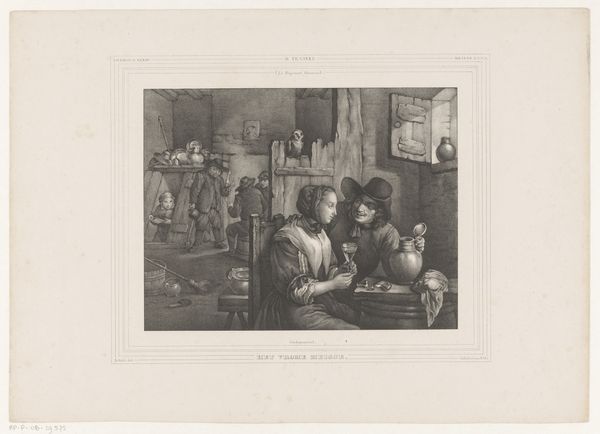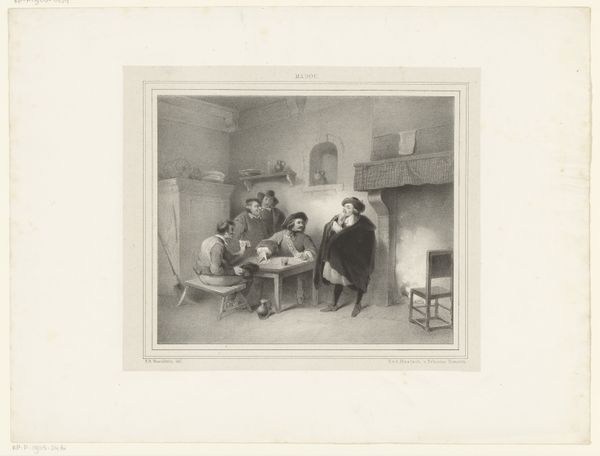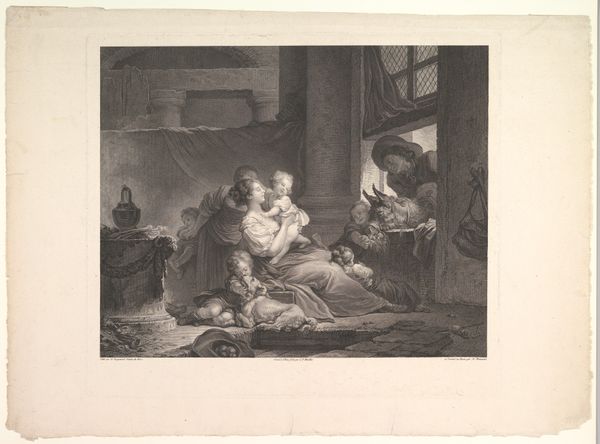
print, engraving
# print
#
genre-painting
#
history-painting
#
engraving
#
realism
Dimensions: height 436 mm, width 510 mm
Copyright: Rijks Museum: Open Domain
Editor: Here we have "Woman with Child at the Breast and Five Dogs around a Drinking Bowl," an engraving by John Outrim from 1840. It has such a calm and intimate mood. What’s your read on this piece? Curator: Well, this image presents a fascinating intersection of domesticity, motherhood, and social roles. In 1840, genre paintings became quite popular and provided a window into the lives of everyday people. How do you see this fitting into that trend? Editor: I can see how this snapshot aligns with that. It is an image of a mother, doing mundane things around her home. Is the art trying to convey anything deeper, given that these types of painting are not usually deemed fit as ‘high art’ due to their lower subjects? Curator: Precisely! The engraving captures a naturalistic scene, a moment frozen in time of motherly care and the simplicity of domestic life, yet this intimacy would have also had an implied message for a wider public in regards to woman’s role in society. What could a depiction of a woman's nurturing role represent during that era? Editor: Maybe to illustrate the value and natural disposition of women in care-taking and domestic duties. Also, a more immediate understanding is that women may breastfeed anywhere. Curator: Indeed, and how that also intersected with class and expectations. Consider the five dogs sharing a bowl—domestic harmony perhaps, a subtle comment on societal roles and the social contract that painting offers, perhaps? These dogs are literally consuming from the same well, creating some visual metaphors for thinking about unity. It can even make us think about socio-political forces and the impact they have in influencing artwork. What do you think about how this painting affects audiences today? Editor: This makes me consider the engraving as a cultural artifact and as a form of advocacy. I also understand the layers of messages embedded in it. It is cool how we were able to delve into all that just from this painting! Curator: Absolutely! The study of Art History brings context to our understandings, and by observing the visual cues in art, we discover more profound knowledge!
Comments
No comments
Be the first to comment and join the conversation on the ultimate creative platform.
